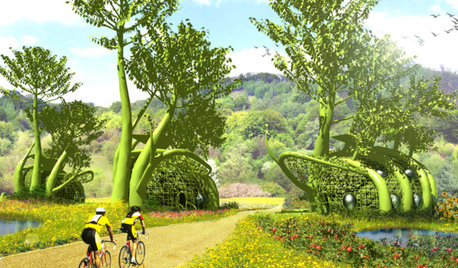Proposed Science Fair project for 5th grader
xpoc454
13 years ago
Related Stories

EVENTSOn Show: Weird, Wondrous Science Meets Design
Houses grown, not built. Power-generating soil. And snail poop that ... well, see for yourself in our coverage of a new Rotterdam exhibit
Full Story
DECORATING GUIDES16 Lounges Go Wild for Science at San Francisco's Exploratorium
See the imaginative designs concocted and let us know which style formula works best for you
Full Story
REMODELING GUIDES6 Steps to Planning a Successful Building Project
Put in time on the front end to ensure that your home will match your vision in the end
Full Story
DECORATING GUIDESCalifornia Law: License to Practice Interior Design?
A proposed bill that would require a license to practice interior design in California has Houzzers talking. Where do you stand?
Full Story
BUDGETING YOUR PROJECTDesign Workshop: Is a Phased Construction Project Right for You?
Breaking up your remodel or custom home project has benefits and disadvantages. See if it’s right for you
Full Story
CONTRACTOR TIPSLearn the Lingo of Construction Project Costs
Estimates, bids, ballparks. Know the options and how they’re calculated to get the most accurate project price possible
Full Story
WORKING WITH PROSYour Guide to a Smooth-Running Construction Project
Find out how to save time, money and your sanity when building new or remodeling
Full Story
SMALL HOMESMaking Room: Discover New Models for Tiny NYC Apartments
Explore a New York exhibition of small-space design proposals that rethink current ideas about housing
Full Story
MOST POPULAR10 Things to Ask Your Contractor Before You Start Your Project
Ask these questions before signing with a contractor for better communication and fewer surprises along the way
Full Story
WORKING WITH PROSHow to Hire the Right Architect: Comparing Fees
Learn common fee structures architects use and why you might choose one over another
Full StoryMore Discussions






alabamanicole
xpoc454Original Author
Related Professionals
Tempe Landscape Contractors · Wakefield Landscape Contractors · Maple Valley Landscape Contractors · Camp Verde Landscape Contractors · Cary Landscape Contractors · Hickory Hills Landscape Contractors · Lake Zurich Landscape Contractors · Irvington Landscape Contractors · Northlake Landscape Contractors · Genesee Stone, Pavers & Concrete · Hermitage General Contractors · Hutchinson General Contractors · North Lauderdale General Contractors · Spanaway General Contractors · Villa Park General Contractorsalabamanicole
equinoxequinox
borderbarb
dsfoxx
xpoc454Original Author
karendee
pjames
cathd66
steamyb
equinoxequinox
steamyb
steamyb